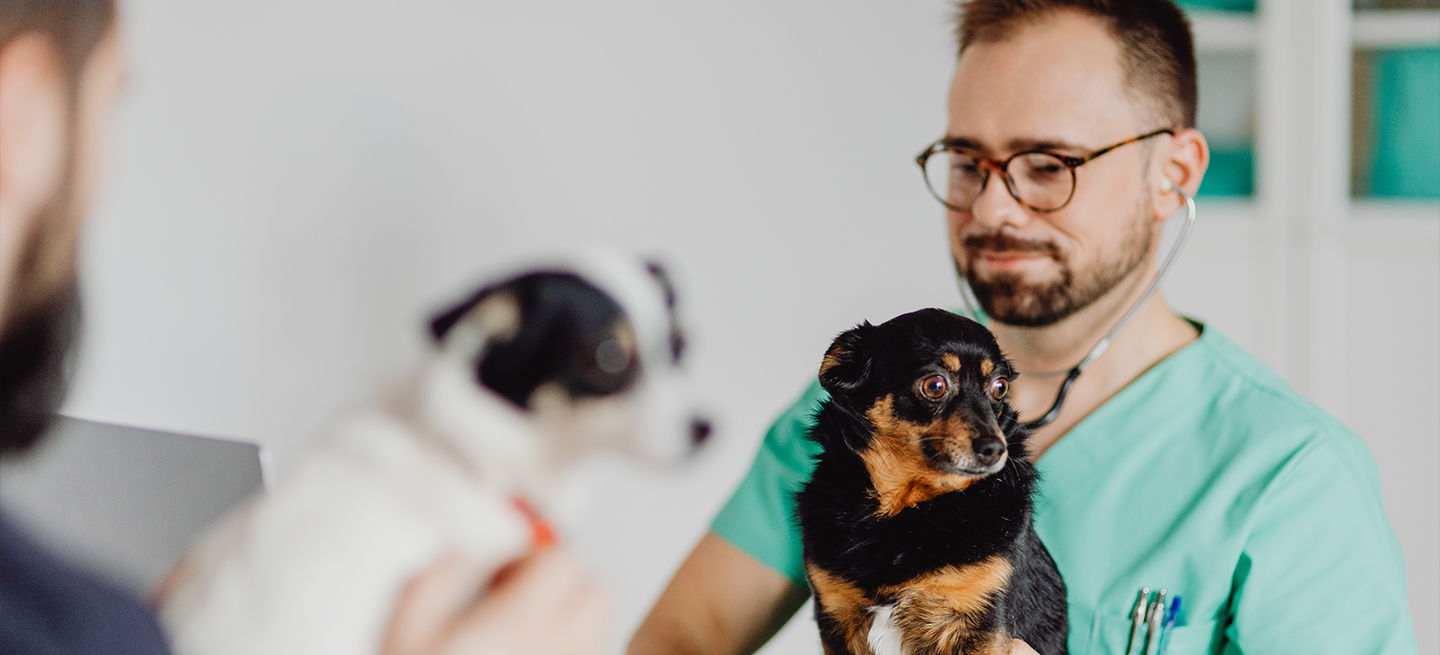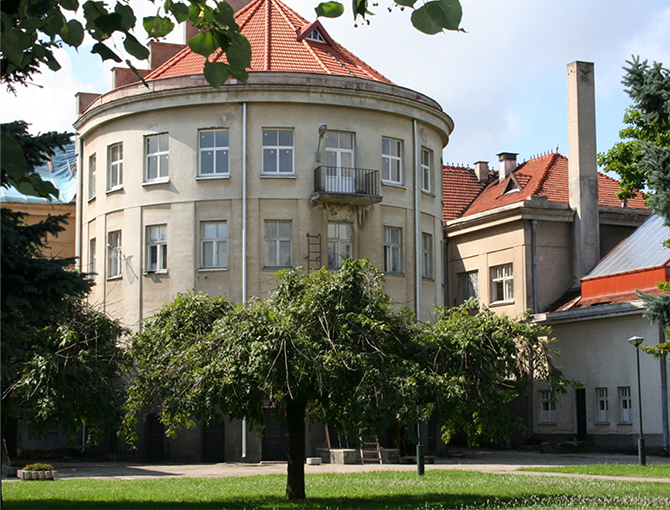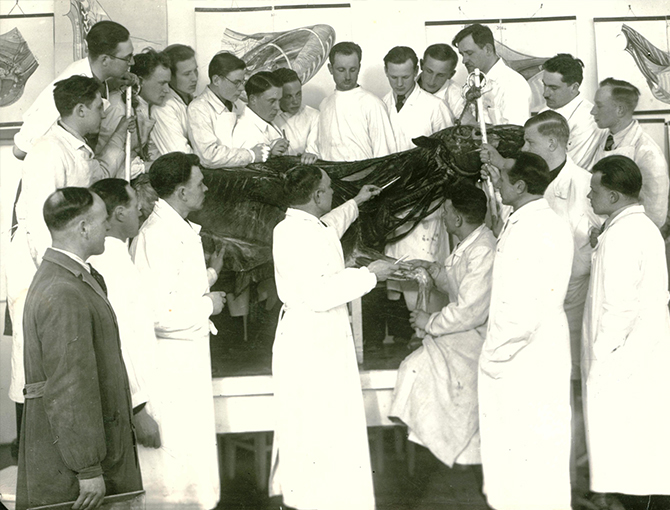all of the disciplines are taught to students at the Academy (Rector Jonas Čygas). Since 1949 The Academy had a Part-time Faculty, and since 1976 – Faculty of Professional Development.

Veterinary ACADEMY

veterinary academy
The LSMU Veterinary Academy is the only one in Lithuania that trains qualified veterinarians whose degrees are recognised throughout Europe. 2010 Following the merger of Kaunas University of Medicine and the Lithuanian Veterinary Academy, the academy became an equally valued Academy at the Lithuanian University of Health Sciences.
Two faculties of the Academy – Veterinary and Animal Science – offer first, second cycle and integrated studies: Study programmes in Veterinary Medicine, Food Science, Veterinary Food Safety, Animal Science, Animal-Human Interaction. International research is carried out in the departments and institutes of the Veterinary Academy.
ABOUT THE VETERINARY ACADEMY
After the proclamation of Lithuania’s independence in 1918 the draft statute of the Veterinary Department of the Ministry of Agriculture raised the issue of establishing a higher veterinary school for the first time in Lithuania, as there was a great shortage of veterinary specialists after the World War I. In 1922, it was decided to open the Veterinary Department at the Faculty of Medicine of the University of Lithuania, which admitted 41 students and 11 free listeners. In 1928 the department was closed due to a lack of funds, a shortage of lecturers and a poor teaching base, and students were sent to continue their studies at foreign universities.

The progress of animal husbandry in the independent state and the emerging meat and dairy industry, the care of exported livestock products, and the care of military horses required more and more veterinarians, and their training abroad was expensive, thus in 1935 Veterinary Department made the decision about the necessity of establishing a higher education institution for training veterinarians. In 1936, the Provisional Council of the Veterinary Academy was formed, chaired by Stasys Jankauskas, Director of the Veterinary Department of the Ministry of Agriculture. One of the members of the council was Dean of the Faculty of Medicine of Vytautas Magnus University Prof. V. Lašas. The Council took care of the training of the teaching staff of the new educational institution, the development of curricula, structural units and the legal framework.

The opening ceremony of the new Veterinary Academy took place in the new building of the State Institute of Veterinary Bacteriology in Kaunas on 19 September 1936. In the first year, 25 students were admitted. The legally established Academy was not yet independent. General sciences were taught at the Faculty of Medicine of Vytautas Magnus University, except for animal anatomy, which was taught at the Anatomy Department of the State Institute of Veterinary Bacteriology (VVBI). Only in July 1938 with the announcement of the Statute and after merging of the modern VVBI with the Academy, the Veterinary Academy became an independent higher education institution, surpassing the higher education institutions of neighbouring Latvia and Estonia at that time. It consisted of a production unit taken over from the VVBI, the Institute of Serology. Other departments of the VVBI were reorganised into departments of the Academy, and some of the Institute’s researchers became lecturers at the Academy, most of whom were graduates of authoritative European universities. By the order of the President of Lithuania A. Smetona, Stasys Jankauskas, who graduated from the University of Munich, was appointed as Rector of the Academy.
The opening ceremony of the new Veterinary Academy took place in the new building of the State Institute of Veterinary Bacteriology in Kaunas on 19 September 1936. In the first year, 25 students were admitted. The legally established Academy was not yet independent. General sciences were taught at the Faculty of Medicine of Vytautas Magnus University, except for animal anatomy, which was taught at the Anatomy Department of the State Institute of Veterinary Bacteriology (VVBI). Only in July 1938 with the announcement of the Statute and after merging of the modern VVBI with the Academy, the Veterinary Academy became an independent higher education institution, surpassing the higher education institutions of neighbouring Latvia and Estonia at that time. It consisted of a production unit taken over from the VVBI, the Institute of Serology. Other departments of the VVBI were reorganised into departments of the Academy, and some of the Institute’s researchers became lecturers at the Academy, most of whom were graduates of authoritative European universities. By the order of the President of Lithuania A. Smetona, Stasys Jankauskas, who graduated from the University of Munich, was appointed as Rector of the Academy.

After the Nazis occupied Lithuania in 1943. The Veterinary Academy was closed. Rector Juozas Motiejūnas allowed students to study in secret to avoid mobilisation into the occupying army. He succeeded in persuading a German commissioner to open laboratories to prevent infectious diseases. In 1944, 18 lecturers and some students emigrated abroad.
After the war, the small staff of the Academy experienced many difficulties (Rector Juozas Žemaitis). There was a lack of teaching aids, no fuel, no electricity, and a shortage of experienced educators. In 1946 the flood destroyed part of the laboratory equipment, damaged the buildings, killed all laboratory animals, and 30 serum horses, producers of therapeutic sera, from the Institute of Serology. The Academy was renamed the Lithuanian Veterinary Academy (LVA). In 1946 the second Faculty was established – the Faculty of Zootechnics, later the Faculty of Zooengineering, and in 1992 it was reorganised and renamed as the Faculty of Animal Husbandry Technology.

Important dates
the training base of the Academy was constantly expanded. In 1974 the scientific sector was established, the number of students increased, the number of scientific and pedagogical staff increased (Rector Jonas Šulskis).
a zooengineering building with auditoriums and laboratories is built, in 1983 – a sports base (rector Rimantas Karazija).
Dr. L. Kriaučeliūnas Small Animal Clinic is opened, in which practical training takes place (Rector Vidmantas Bižokas), 2001 the Continuing Education Centre for Veterinary Practitioners is set up, in 2001 Lithuanian Veterinary Academy is merged with the Institute of Animal Husbandry and a year later with the Lithuanian Veterinary Institute. 1994, a new coat of arms and flag of the Academy are created.
In September the 70th anniversary of LVA is celebrated. During these years, 4,532 graduates in full-time and 564 part-time departments obtained the qualification of a veterinarian, and 3,818 qualified livestock specialists were trained. LVA, as a specialized higher education institution, in addition to training specialists, is also a research institution, which conducts research in specialised research laboratories and institutes at the departments, prepares doctoral students in veterinary and zootechnical sciences, and publishes the scientific journal Veterinarija ir Zootechnika.
With the approval of the LVA and KMU councils and senates, it is decided to establish the Lithuanian University of Health Sciences.
rectors
- 1928 – 1940Stasys Jankauskas
- 1940 – 1941Jonas Nainys
- 1941 – 1944Juozas Motiejūnas
- 1944 – 1947Juozas Žemaitis
- 1947 – 1959Jonas Čygas
- 1959 – 1976Jonas Šulskis
- 1976 – 1992Rimantas Karazija
- 1993 – 2003Vidmantas Bižokas
- 2003 – 2010Henrikas Žilinskas
CHANCELLORS
- 2010 – 2016 m.Prof. habil. dr. Henrikas Žilinskas
- 2016 m. – nowProf. Mindaugas Malakauskas
